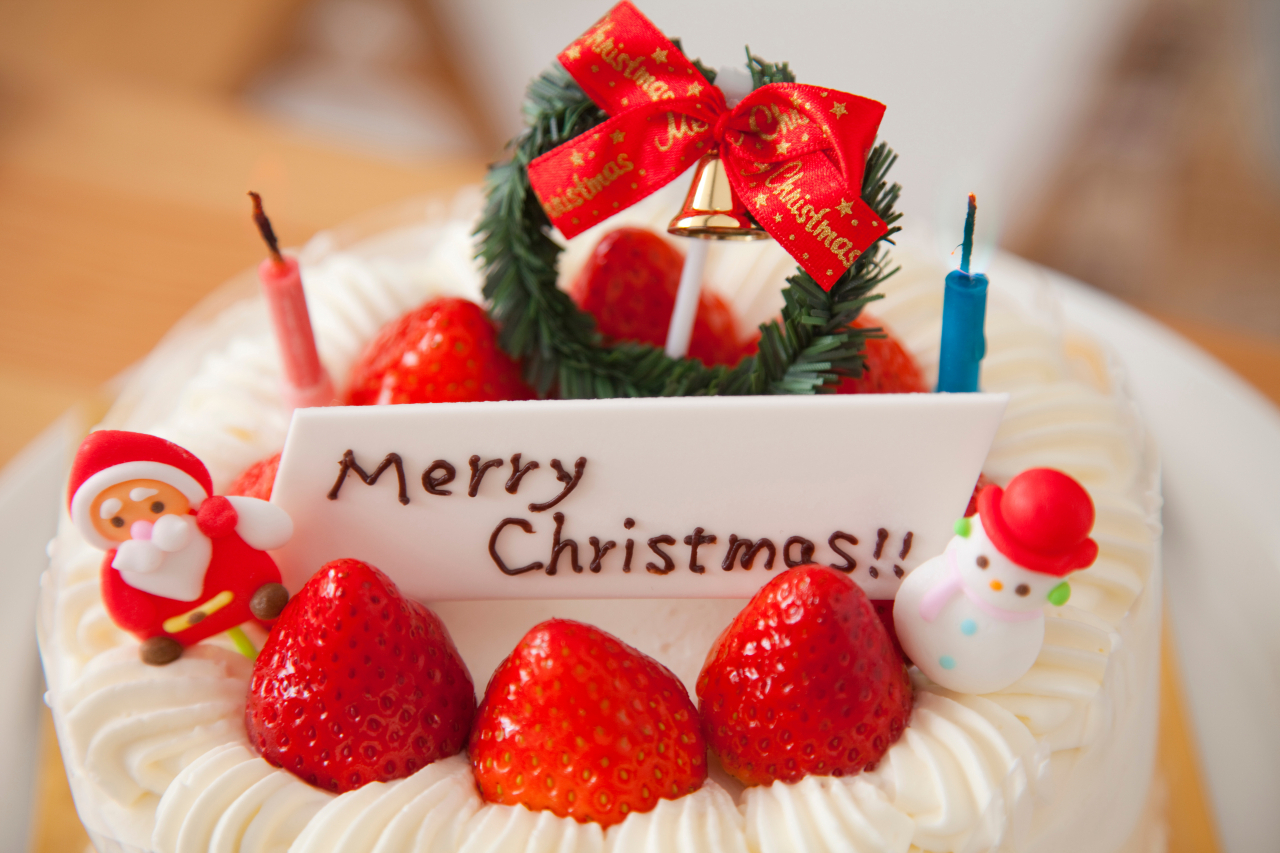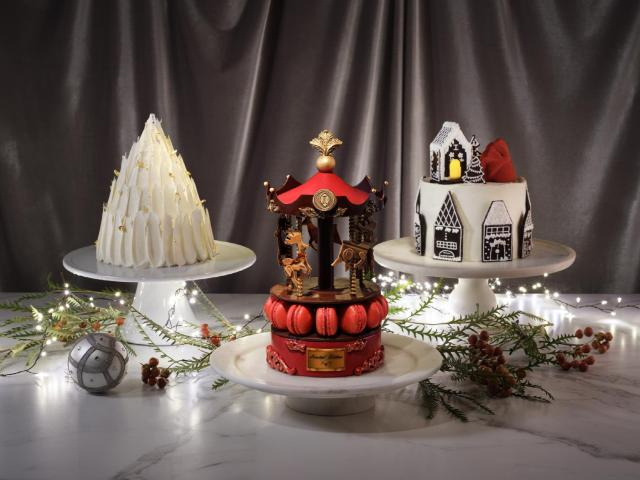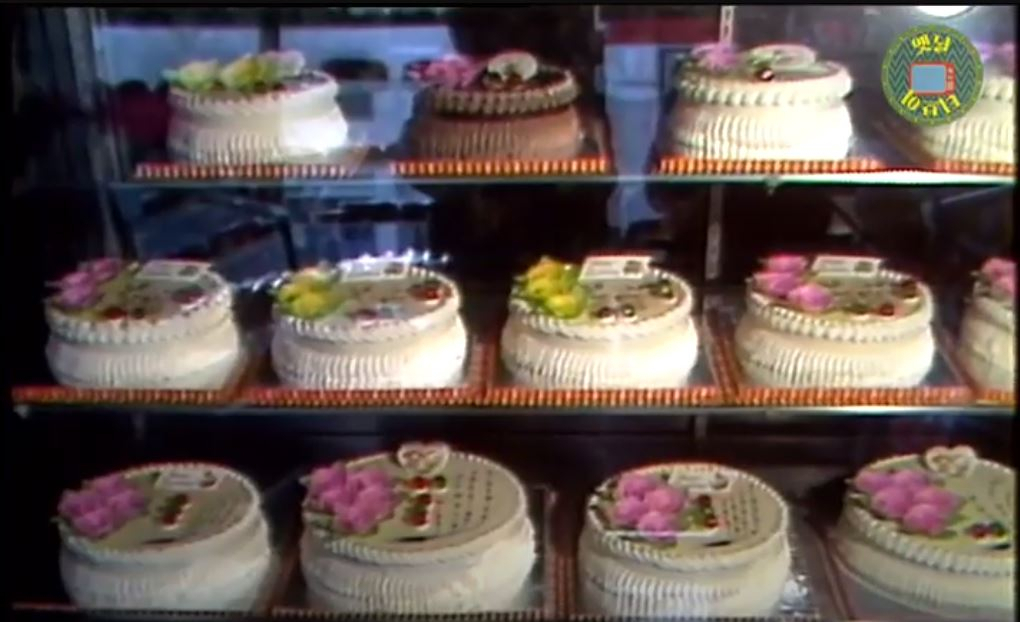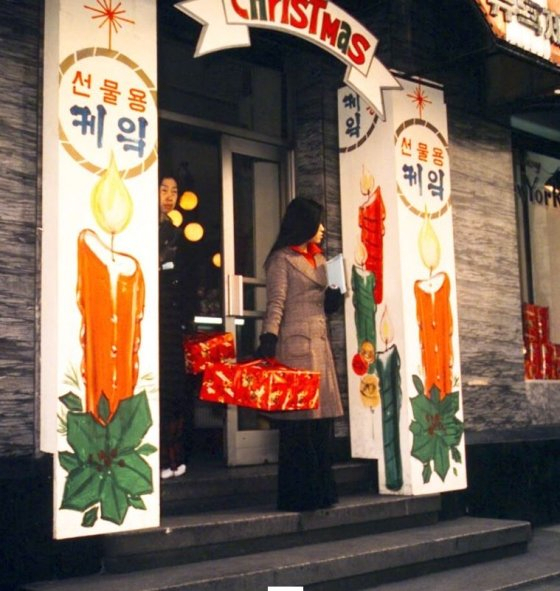 |
(123rf) |
Ever wondered what Koreans most enjoy on their Christmas dinner tables? While the classic yuletide meal of turkey and stuffing are hard to find and there's no specific Korean Christmas dish, people often turn to a special treat enjoyed on other special occasions: cakes.
Sharing a cake after a Christmas meal, which could be anything from a takeaway pizza and fried chicken to a more special menu, has become a cherished holiday tradition for many Korean families, with some splurging upwards of 200,000 won ($152) on extravagant desserts crafted by luxury hotel delis.
The demand for Christmas cakes in Korea shows no sign of slowing down this year, with bakeries and hotels from all tiers announcing their lineup of aesthetically pleasing Christmas confections for early reservation.
 |
Grand InterContinental Seoul Parnas showcases luxury cakes, including a limited edition "merry-go-round" cake (center) priced at 250,000 won. (Courtesy of Grand InterContinental Seoul Parnas) |
Cake as Christmas hallmark
Although the original tradition overseas is to bake Christmas dishes and treats at home, in Korea, consumers head to bakeries to make purchases of Christmas pastries.
Here, the quintessential Christmas specialty is a sponge cake frosted with white whipped cream and adorned with strawberry toppings. The color palette usually includes white, red and green, evoking images of snow, Santa and Christmas trees.
Kim Jin-hwan, a resident of Seoul in his 20s, intends to purchase a cake adorned with Christmas trees and Santa figures for this year's Christmas celebration.
He nostalgically reminisced about Christmas celebrations, noting, "At the heart of every Christmas celebration was always a cake." He went on to note that the presence of the Christmas cake enhances the festive atmosphere.
"Christmas gatherings just feel incomplete without it," he added.
Lee Eun-hee, a professor at Inha University's Department of Consumer Science, pointed out the cost-effectiveness of purchasing a cake in Korea, a country where a long-term Christmas tradition has not developed to the extent seen in the West.
She emphasized that decorations on Christmas cakes serve as substitutes for traditional Christmas objects like trees and snowmen, helping to create a celebratory ambiance.
"We have developed the habit of placing Christmas cakes at the center of celebrations as a convenient and affordable means of experiencing a Christmas atmosphere," she remarked.
Additionally, Professor Lee underscored the influence of local bakeries' commercial advertisements, coupled with media promotions portraying Christmas as a holiday centered around cakes.
"Annually, we come across Christmas ads portraying a warm ambiance heightened by an array of illuminated Christmas cakes," she noted. "The continual exposure to such commercials can instill the notion in people's minds that Christmas cakes are essential for celebrating the holiday season."
An official from SPC Group, which owns the nation’s largest baker franchise Paris Baguette, told The Korea Herald that the Christmas season is of utmost importance to the firm. This period typically records the highest sales volume of the year, experiencing an average leap of around 10 percent.
To meet the heightened demand, a dedicated team is formed specifically for designing and crafting Christmas bakery products.
"The white whipped cream cake topped with strawberries remains a staple highly sought-after by the general public," the official explained. "We also provide a diverse selection of Christmas cakes to satiate the craving for varied and Instagram-worthy Christmas aesthetics."
 |
A diverse selection of cakes is on display for the Christmas season at a franchise bakery in Seoul, Nov. 29, 2023. (Newsis) |
How it began
The Korean tradition of enjoying cake on the Christmas table has its roots in both the country’s own cultural evolution and influences from its immediate neighbor and 20th-century colonizer, Japan.
In Japan, too, the quintessential Christmas food is cake.
Hideyo Konagaya, a professor of social sciences at Waseda University, posits in his paper titled "The Christmas Cake: A Japanese Tradition of American Prosperity," published in the Journal of Popular Culture, that the Christmas cake represents a modernized version of Japanese ceremonial food infused with American values. The paper stated, “Corresponding with absorption of American ideas and ways of lives, a new form of ceremonial food appeared as the cake.”
The Western influence on the Japanese pastry scene became apparent in 1910 when Fujiya, a pastry shop in Tokyo's Yokohama, introduced the nation's first Christmas cake -- a European-style brown fruitcake.
However, only by the 1920s, the shop had crafted the prototype for the modern Christmas cake with snow white icing. This confectionery manufacturer is renowned for popularizing the sale of Christmas cakes through its marketing slogan, "Let's eat cake at Christmas."
In this context, some have pointed out that the Korean custom of seeking cakes on Christmas was transplanted from Japan, a country that underwent culinary modernization before Korea did.
Indeed, although the introduction of Christmas to South Korea dates back to the late 19th century through the efforts of Christian missionaries, it was not until the early 1920s that Korea witnessed the establishment of its first Western-style bakery under Japanese colonial rule.
After the Korean independence in 1945, the bakery was re-named "Leesungdang," marking the nascent stages of the cake-buying tradition. Yet, the mass popularity of the tradition begun to take form in the 1970s and 80s when cake ingredients like milk, sugar and butter were no longer rarities.
 |
Butter cream cakes are on display at a bakery in the 1980s. (Courtesy of MBC) |
Before that time, cakes were considered luxury goods. According to the local Kyunghyang newspaper in the 1960s, the price of a cake soared to 30,000 won, three to four times higher than the cost of a cow, which was priced at 8,000 won during that period.
In the absence of easily accessible refrigerators, buttercream cakes stood out as the epitome of Christmas cakes of that time. Industry insiders emphasized that buttercream icing, being less susceptible to temperature changes compared to whipped cream icing, had the benefit of retaining its shape for a longer duration.
Entering into the 1990s, however, a significant shift in cake consumption patterns took place as the popularity of high-calorie, fatty butter-based cakes declined, giving way to the emergence of the whipped cream cake.
The latter, recognized for its lighter and fresher taste, gained widespread acceptance as the quintessential Christmas cake among the general public. This trend aligned with the mass production of Christmas cakes by bakeries, according to industry insiders.
 |
Customers hold boxes of Christmas cakes on Christmas Eve in Seoul in 1975. (Courtesy of National Archives of Korea) |







![[Today’s K-pop] Blackpink’s Jennie, Lisa invited to Coachella as solo acts](http://res.heraldm.com/phpwas/restmb_idxmake.php?idx=644&simg=/content/image/2024/11/21/20241121050099_0.jpg)